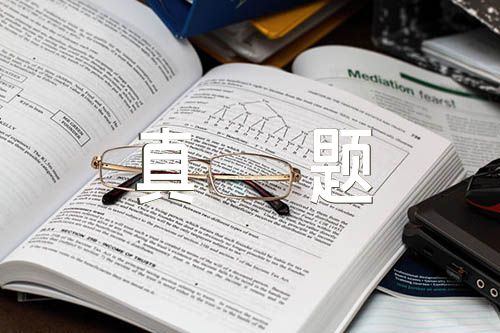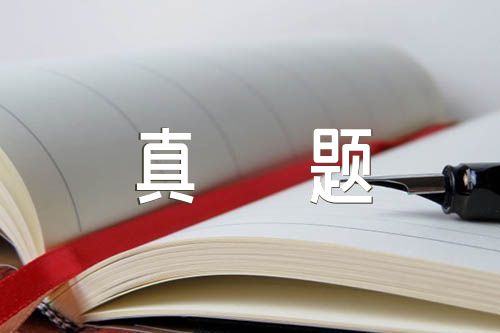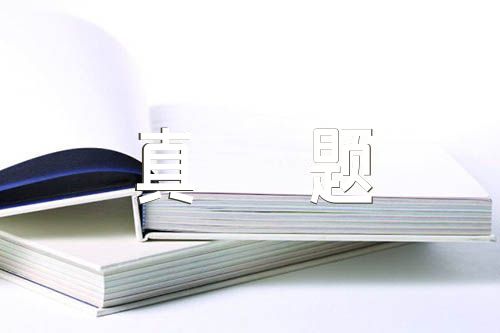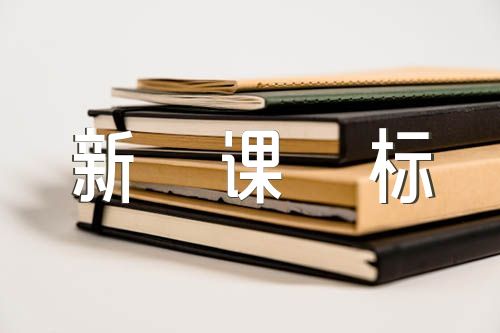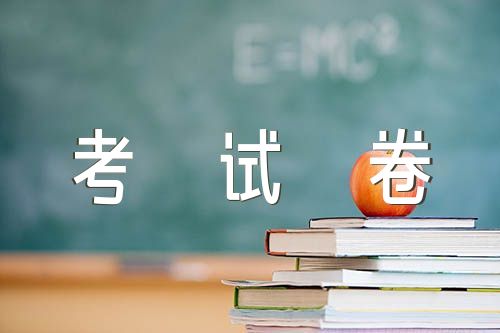【www.jianqiaoenglish.com--英语真题】
以下是小编整理的2023重庆新高考2卷英语真题带答案精选二篇,仅供参考,希望能够帮助到大家。
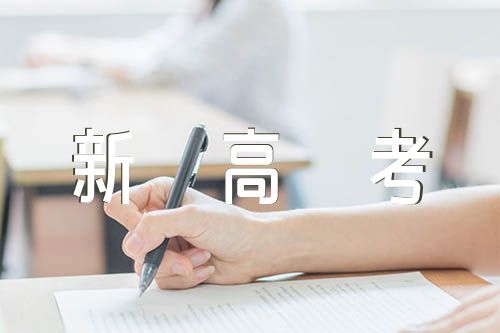
2023重庆新高考2卷英语真题带答案1
一、听力
听力是高考试卷中的第一道大题,分值很大。听力除了本身的难度,还对个人的整体发挥有很大的影响,不少人就是因为听力没听懂,所以就乱了,以至于后面也没能发挥出正常水平。
听力其实就是两点。第一,听到数字时马上记录,当然高考英语没那么简单,第一个听到的数字往往是干扰选项,并不是答案,一般后面出现的数字才是答案。第二,听力有时候听不懂,问题也不是关于数字的,这时就要联想平时的训练,往往那些平时练习中的英语听力高频词汇如果出现了,那么一般就是答案。
二、阅读
阅读小编这里也给出两大类方法,一类是先看问题,猜测大意,然后带着问题阅读。第二类,先浏览文章。
对于第一类,先看问题时,一定要懂得把几个问题关联起来,猜测大意,记住问题问了什么,然后读文章,不一定要读懂,只要找出文章中自己需要的部分。
第二类,先要浏览文章,把每一段讲了什么记录下来,然后看问题,再回过头来,找出对应段落,细读,最终找出答案。
三、完形填空
完形填空往往比阅读更难做,它不仅要求考生明白大意,而且对考生词汇量的要求也很高。选项中常常会给出几个意思相近的词,这时那个在考试大纲中经常出现的词汇,一般是答案,因为高考不是为了为难人,而是为了督促更多人努力获取知识,而那些大纲中的高频词汇,也就是重点词汇。
四、语法填空
提到语法很多人就头疼,不过英语语法没有汉语那么复杂,根据很多老师的建议,只要把汉语语法中的主谓宾语和定状补语弄清楚,那么英语语法也没有什么困难。
小编统计近三年全国卷发现,没有一个语法填空,填的是所给词汇的原型,一般过去分词、现在分词、不定式、分词做状语等是高频考点。
五、短文改错
目前全国卷的短文改错是十分,一共有十处错误,但是如果考生改的超过了十处,那么以前十个为准。
短文改错考点有以下这些,语法错误、词汇变化错误、连词使用错误,这四处错误在近三年全国卷中,每年都有出现。其中连词错误,经常出现的是转折与承接的错误,也就是but与and应用错误,此外现在分词和过去分词的错误也是一直都出现的。
六、作文
作文是英语考试的最后一题,也是整个高考的最后一题。作文首先要做到两点,一是书写一定要工整,二是尽可能不要有错误,要知道错误一个单词0.5分就没了。
在确保以上两点的基础上,可以应用虚拟句、从句、分词做状语,目前这三种句型是英语作文中得分较高的。
2023重庆新高考2卷英语真题带答案2
本试卷共12页。考试结束后, 将本试卷和答题卡一并交回。
注意事项: 1. 答题前, 考生先将自己的姓名、准考证号码填写清楚, 将条形码准确粘贴在考生信息条形码粘贴区。
2. 选择题必须使用2B铅笔填涂; 非选择题必须使用0.5毫米黑色字迹的签字笔书写, 字体工整、笔迹清楚。
3. 请按照题号顺序在答题卡各题目的答题区域内作答, 超出答题区域书写的答案无效; 在草稿纸、试卷上答题无效。
4. 作图可先使用铅笔画出, 确定后必须用黑色字迹的签字笔描黑。
5. 保持卡面清洁, 不要折叠, 不要弄破、弄皱, 不准使用涂改液、修正带、刮纸刀。
第一部分 听力(1-20小题)在笔试结束后进行。
注意事项: 英语听力共两节, 20小题, 每小题1.5分, 满分30分。
第一部分听力(共两节, 满分30分)
做题时, 先将答案标在试卷上。录音内容结束后, 你将有两分钟的时间将试卷上的答案转涂到答题卡上。
第一节(共5小题; 每小题1.5分, 满分7.5分)
听下面5段对话。每段对话后有一个小题, 从题中所给的A、B、C三个选项中选出最佳选项。听完每段对话后, 你都有10秒钟的时间来回答有关小题和阅读下一小题。每段对话仅读一遍。
例: How much is the shirt?
A. ?19.15. B. ?9.18. C. ?9.15.
答案是C。
1. What will Jack probably do this weekend?
A. Go camping. B. Visit a friend. C. Watch a film.
2. What does the woman ask the man to do?
A. Take care of her bags. B. Pack the food for her. C. Check the train schedule.
3. When will the man see Bob?
A. This Friday. B. This Saturday. C. Next Monday.
4. Why does the man apologize?
A. For the terrible food. B. For the overcharge. C. For the waiter’s rudeness.
5. What are the speakers talking about?
A. Writing a book. B. Holding a celebration. C. Buying a present.
第二节(共15小题; 每小题1.5分, 满分22.5分)
听下面5段对话或独白。每段对话或独白后有几个小题, 从题中所给的A、B、C三个选项中选出最佳选项。听每段对话或独白前, 你将有时间阅读各个小题, 每小题5秒钟; 听完后, 各小题将给出5秒钟的作答时间。每段对话或独白读两遍。
听第6段材料, 回答第6、7题。
6. Why does Sara make the phone call?
A. To ask for advice. B. To arrange an outing. C. To cancel an appointment.
7. What does David want to do?
A. Go to a dinner party. B. Talk to Sara in person. C. Work on the new case.
听第7段材料, 回答第8、9题。
8. Where is Jim now?
A. In a taxi. B. On a bus. C. In his office.
9. What is the woman’s suggestion?
A. Going to the city center. B. Taking a short cut home. C. Meeting Jim in the park.
听第8段材料, 回答第10至13题。
10. What did Clara do at the weekend?
A. She planted vegetables. B. She went to a yard sale. C. She visited her grandpa.
11. What did Mark find inside one of the books he bought?
A. A plane ticket. B. A family photo. C. A post card.
12. Where does Mark live?
A. Los Angeles. B. Chicago. C. Philadelphia.
13. What is the relationship between Mark and Ashley?
A. Brother and sister. B. Husband and wife. C. Father and daughter.
听第9段材料, 回答第14至17题。
14. What is probably the woman?
A. A teacher. B. A journalist. C. An athlete.
15. What does Victor find difficult as a member of the basketball team?
A. Adapting himself to the intense training.
B. Dealing with the pressure from the coach.
C. Regaining the skills learned in high school.
16. What does Victor say about the players on the team?
A. They are of the same age.
B. They are similar in character.
C. They are from different countries.
17. How does Victor feel about his team now?
A. It’s about to break up. B. It’s the best in Indiana. C. It’s getting stronger.
听第10段材料, 回答第18至20题。
18. Who is Tom Hokinson?
A. Founder of a magazine. B. Publisher of a novel. C. Editor of a newspaper.
19. What do we know about the content of The Idler?
A. It’s old-fashioned. B. It’s wide-ranging. C. It’s student-targeted.
20. Why does the speaker give the talk?
A. To do a promotion. B. To discuss an issue. C. To introduce a lecturer.
第二部分 阅读(共两节, 满分50分)
第一节(共15小题; 每小题2.5分, 满分37.5分)
阅读下列短文, 从每题所给的A、B、C、D四个选项中选出最佳选项。
A
Yellowstone National Park offers a variety of ranger programs throughout the park, and throughout the year. The following are descriptions of the ranger programs this summer.
Experiencing Wildlife in Yellowstone(May 26 to September 2)
Whether you’re hiking a backcountry trail(小径), camping, or just enjoying the park’s amazing wildlife from the road, this quick workshop is for you and your family. Learn where to look for animals and how to safely enjoy your wildlife watching experience. Meet at the Canyon Village Store.
Junior Ranger Wildlife Olympics(June 5 to August 21)
Kids can test their skills and compare their abilities to the animals of Yellowstone. Stay for as little or as long as your plans allow. Meet in front of the Visitor Education Center.
Canyon Talks at Artist Point(June 9 to September 2)
From a classic viewpoint, enjoy Lower Falls, the Yellowstone River, and the breathtaking colors of the canyon(峡谷)while learning about the area’s natural and human history. Discover why artists and photographers continue to be drawn to this special place. Meet on the lower platform at Artist Point on the South Rim Drive for this short talk.
Photography Workshops(June 19& July 10)
Enhance your photography skills—join Yellowstone’s park photographer for a hands-on program to inspire new and creative ways of enjoying the beauty and wonder of Yellowstone.
6/19-Waterfalls &Wide Angles: meet at Artist Point.
7/10-Wildflowers &White Balance: meet at Washburn Trailhead in Chittenden parking area.
21. Which of the four programs begins the earliest?
A. Photography Workshops. B. Junior Ranger Wildlife Olympics.
C. Canyon Talks at Artist Point. D. Experiencing Wildlife in Yellowstone.
22. What is the short talk at Artist Point about?
A. Works of famous artists. B. Protection of wild animals.
C. Basic photography skills. D. History of the canyon area.
23. Where will the participants meet for the July 10 photography workshop?
A. Artist Point. B. Washburn Trailhead.
C. Canyon Village Store. D. Visitor Education Center.
B
Turning soil, pulling weeds, and harvesting cabbage sound like tough work for middle and high school kids. And at first it is, says Abby Jaramillo, who with another teacher started Urban Sprouts, a school garden program at four low-income schools. The program aims to help students develop science skills, environmental awareness, and healthy lifestyles.
Jaramillo’s students live in neighborhoods where fresh food and green space are not easy to find and fast food restaurants outnumber grocery stores. "The kids literally come to school with bags of snacks and large bottles of soft drinks," she says. "They come to us thinking vegetables are awful, dirt is awful, insects are awful." Though some are initially scared of the insects and turned off by the dirt, most are eager to try something new.
Urban Sprouts’ classes, at two middle schools and two high schools, include hands-on experiments such as soil testing, flower-and-seed dissection, tastings of fresh or dried produce, and work in the garden. Several times a year, students cook the vegetables they grow, and they occasionally make salads for their entire schools.
Program evaluations show that kids eat more vegetables as a result of the classes. "We have students who say they went home and talked to their parents and now they’re eating differently," Jaramillo says.
She adds that the program’s benefits go beyond nutrition. Some students get so interested in gardening that they bring home seeds to start their own vegetable gardens. Besides, working in the garden seems to have a calming effect on Jaramillo’s special education students, many of whom have emotional control issues. "They get outside," she says, "and they feel successful."
24. What do we know about Abby Jaramillo?
A. She used to be a health worker. B. She grew up in a low-income family.
C. She owns a fast food restaurant. D. She is an initiator of Urban Sprouts.
25. What was a problem facing Jaramillo at the start of the program?
A. The kids’ parents distrusted her. B. Students had little time for her classes.
C. Some kids disliked garden work. D. There was no space for school gardens.
26. Which of the following best describes the impact of the program?
A. Far-reaching. B. Predictable. C. Short-lived. D. Unidentifiable.
27. What can be a suitable title for the text?
A. Rescuing School Gardens B. Experiencing Country Life
C. Growing Vegetable Lovers D. Changing Local Landscape
C
Reading Art: Art for Book Lovers is a celebration of an everyday object-the book, represented here in almost three hundred artworks from museums around the world. The image of the reader appears throughout history, in art made long before books as we now know them came into being. In artists’ representations of books and reading, we see moments of shared humanity that go beyond culture and time.
In this "book of books,” artworks are selected and arranged in a way that emphasizes these connections between different eras and cultures. We see scenes of children learning to read at home or at school, with the book as a focus for relations between the generations. Adults are portrayed(描绘)alone in many settings and poses—absorbed in a volume, deep in thought or lost in a moment of leisure. These scenes may have been painted hundreds of years ago, but they record moments we can all relate to.
Books themselves may be used symbolically in paintings to demonstrate the intellect(才智), wealth or faith of the subject. Before the wide use of the printing press, books were treasured objects and could be works of art in their own right. More recently, as books have become inexpensive or even throwaway, artists have used them as the raw material for artworks-transforming covers, pages or even complete volumes into paintings and sculptures.
Continued developments in communication technologies were once believed to make the printed page outdated. From a 21st-century point of view, the printed book is certainly ancient, but it remains as interactive as any battery-powered e-reader. To serve its function, a book must be activated by a user: the cover opened, the pages parted, the contents reviewed, perhaps notes written down or words underlined. And in contrast to our increasingly networked lives where the information we consume is monitored and tracked, a printed book still offers the chance of a wholly private, “off-line” activity.
28. Where is the text most probably taken from?
A. An introduction to a book. B. An essay on the art of writing.
C. A guidebook to a museum. D. A review of modern paintings.
29. What are the selected artworks about?
A. Wealth and intellect. B. Home and school.
C. Books and reading. D. Work and leisure.
30. What do the underlined words “relate to” in paragraph 2 mean?
A. Understand. B. Paint. C. Seize. D. Transform.
31. What does the author want to say by mentioning the e-reader?
A. The printed book is not totally out of date. B. Technology has changed the way we read.
C. Our lives in the 21st century are networked. D. People now rarely have the patience to read.
D
As cities balloon with growth, access to nature for people living in urban areas is becoming harder to find. If you’re lucky, there might be a pocket park near where you live, but it’s unusual to find places in a city that are relatively wild.
Past research has found health and wellness benefits of nature for humans, but a new study shows that wildness in urban areas is extremely important for human well-being.
The research team focused on a large urban park. They surveyed several hundred park-goers, asking them to submit a written summary online of a meaningful interaction they had with nature in the park. The researchers then examined these submissions, coding(编码) experiences into different categories. For example, one participant’s experience of "We sat and listened to the waves at the beach for a while" was assigned the categories “sitting at beach” and “listening to waves.”
Across the 320 submissions, a pattern of categories the researchers call a “nature language” began to emerge. After the coding of all submissions, half a dozen categories were noted most often as important to visitors. These include encountering wildlife, walking along the edge of water, and following an established trail.
Naming each nature experience creates a usable language, which helps people recognize and take part in the activities that are most satisfying and meaningful to them. For example, the experience of walking along the edge of water might be satisfying for a young professional on a weekend hike in the park. Back downtown during a workday, they can enjoy a more domestic form of this interaction by walking along a fountain on their lunch break.
"We’re trying to generate a language that helps bring the human-nature interactions back into our daily lives. And for that to happen, we also need to protect nature so that we can interact with it," said Peter Kahn, a senior author of the study.
32. What phenomenon does the author describe at the beginning of the text?
A. Pocket parks are now popular. B. Wild nature is hard to find in cities.
C. Many cities are overpopulated. D. People enjoy living close to nature.
33. Why did the researchers code participant submissions into categories?
A. To compare different types of park-goers. B. To explain why the park attracts tourists.
C. To analyze the main features of the park. D. To find patterns in the visitors’ summaries.
34. What can we learn from the example given in paragraph 5?
A. Walking is the best way to gain access to nature.
B. Young people are too busy to interact with nature.
C. The same nature experience takes different forms.
D. The nature language enhances work performance.
35. What should be done before we can interact with nature according to Kahn?
A. Language study. B. Environmental conservation.
C. Public education. D. Intercultural communication.
第二节(共5小题; 每小题2.5分, 满分12.5分)
阅读下面短文, 从短文后的选项中选出可以填入空白处的最佳选项。选项中有两项为多余选项。
As an artist who shares her journey on social media, I’m often asked by curious followers how to begin an art journey. Unfortunately, there is no magic list I can offer. I do remember, though, what it was like to be a complete beginner. So I’ve put together some good tips for starting an art journey.
·Start small. I suggest using a sketchbook(素描本)for small studies. These small studies provide inspiration and may be a springboard for more complex works in the future. 36 You’ll want to look back on your journey to see how far you’ve come.
·Paint often and paint from life. There’s no better way to improve than to put in those brush miles. Whether you paint still lifes, portraits, or landscapes, paint from life as much as possible. 37
·Continually challenge yourself to try something new. 38 Artistic growth can be a bit painful. Welcome to the club, we’ve all been there. I love taking on challenges. I once took up a challenge to create a painting every day for a month and post the works online.
· 39 Seeking and accepting constructive feedback(反馈)is crucial to growth. I post my work on social media and, in turn, have met some of the kindest people. They make me feel valued and respected, no matter my level of artistic ability.
The journey you’re on won’t follow a straight path. 40 Push through, give it time and put in the effort. You will harvest the rewards of an artistic life.
A. Get out of your comfort zone.
B. Make career plans and set goals.
C. Don’t throw away your beginner art.
D. Share your work if you feel comfortable doing so.
E. You’ll hit roadblocks, and you’ll feel discouraged at times.
F. Evaluate your performance and, if needed, redefine your role.
G. You’ll develop that painting muscle memory that only comes with repetition.
第三部分语言运用(共两节, 满分30分)
第一节(共15小题; 每小题1分, 满分15分)
阅读下面短文, 从每题所给的A、B、C、D四个选项中选出可以填入空白处的最佳选项。
In April last year, I saw a post on the PNP(Pilots N Paws)website from a family in Topeka. They had to move to Virginia but they were on a very tight 41 . They could not afford to pay for 42 for their dog, Tiffy, and 43 wanted to take her with them.
It just 44 that I was planning another PNP flight with another pilot, Karen, who 45 to take Tiffy from Kansas City to Virginia. What I was to do was fly to Topeka to 46 Tiffy.
When I met Tiffy’s owners, they seemed very 47 . George, the husband, was trying to be calm, but I could tell this was 48 for him, having to leave his dog to a 49 and trust that everything would 50 .
After some goodbyes, I asked George and his wife to help me 51 Tiffy into the plane. I promised to take care of Tiffy and 52 them as soon as we got to Kansas City.
The flight was 53 , and Tiffy was a great passenger. The next day, she 54 with Karen and made it back to George in Virginia within a few days. He was so 55 and sent me a nice e-mail with pictures. It felt great to know that I had helped bring this family together again.
41. A. turn B. budget C. schedule· D. connection
42. A. food B. shelter C. medicine D. transportation
43. A. desperately B. temporarily C. secretly D. originally
44. A. appeared B. proved C. happened D. showed
45. A. waited B. offered C. hurried D. failed
46. A. see off B. look for C. hand over D. pick up
47. A. confused B. nervous C. annoyed D. curious
48. A. hard B. fine C. common D. lucky
49. A. coworker B. passenger C. stranger D. neighbor
50. A. speed up B. work out C. come back D. take off
51. A. feed B. follow C. change D. load
52. A. call B. join C. leave D. serve
53. A. unnecessary B. unexpected C. unavoidable D. uneventful
54. A. returned B. fought C. flew D. agreed
55. A. thankful B. generous C. proud D. sympathetic
第二节(共10小题; 每小题1.5分, 满分15分)
阅读下面短文, 在空白处填入1个适当的单词或括号内单词的正确形式。
Whenever I tell people that I teach English at the Berlin Zoo, I almost always get a questioning look. Behind it, the person is trying to figure out who exactly I teach…the animals?
Since June 2017, right before the 56 (arrive)of the two new pandas, Meng Meng and Jiao Qing, I have been helping the panda keepers at the zoo to feel more comfortable and 57 (confidence)speaking English. And who do they speak English 58 ?
Not the pandas, even though 59 language used for the medical training instructions is actually English. They talk to the flood of international tourists and to 60 (visit)Chinese zookeepers who often come to check on the pandas, which are on loan from China. They also need to be ready to give 61 (interview)in English with international journalists. This is 62 they need an English trainer.
So, what are they learning? 63 (basic), how to describe a panda’s life. It’s been an honor to watch the panda programme develop 64 to see the pandas settle into their new home. As a little girl, I 65 (wish)to be a zookeeper when I grew up. Now, I’m living out that dream indirectly by helping the panda keepers do their job in English.
第四部分 写作(共两节, 满分40分)
第一节(满分15分)
假定你是李华, 外教Ryan准备将学生随机分为两人一组, 让大家课后练习口语, 你认为这样分组存在问题。请你给外教写一封邮件, 内容包括:
1. 说明问题;
2. 提出建议。
注意:
1. 写作词数应为80个左右;
2. 请按如下格式在答题卡的相应位置作答。
DearRyan, I’mLiHuafromClass3. Yourssincerely, LiHua |
第二节(满分25分)
阅读下面材料, 根据其内容和所给段洛开头语续写内段, 使之构成一篇完整的短文。
When I was in middle school, my social studies teacher asked me to enter a writing contest. I said no without thinking. I did not love writing. My family came from Brazil, so English was only my second language. Writing was so difficult and painful for me that my teacher had allowed me to present my paper on the sinking of the Titanic by acting out a play, where I played all the parts. No one laughed harder than he did.
So, why did he suddenly force me to do something at which I was sure to fail? His reply: "Because I love your stories. If you’re willing to apply yourself, I think you have a good shot at this.” Encouraged by his words, I agreed to give it a try.
I chose Paul Revere’s horse as my subject. Paul Revere was a silversmith(银匠)in Boston who rode a horse at night on April 18, 1775 to Lexington to warn people that British soldiers were coming. My story would come straight from the horse’s mouth. Not a brilliant idea, but funny; and unlikely to be anyone else’s choice.
What did the horse think, as he sped through the night? Did he get tired? Have doubts? Did he want to quit? I sympathized immediately. I got tired. I had doubts. I wanted to quit. But, like Revere’s horse, I kept going. I worked hard. I checked my spelling. I asked my older sister to correct my grammar. I checked out a half dozen books on Paul Revere from the library. I even read a few of them.
When I handed in the essay to my teacher, he read it, laughed out loud, and said, “Great. Now, write it again." I wrote it again, and again and again. When I finally finished it, the thought of winning had given way to the enjoyment of writing. If I didn’t win, I wouldn’t care.
注意:
1. 续写词数应为150个左右;
2. 请按如下格式在答题卡的相应位置作答。
Afewweekslater,whenIalmostforgotthecontest,therecamethenews. Iwenttomyteacher’sofficeaftertheawardpresentation. |


